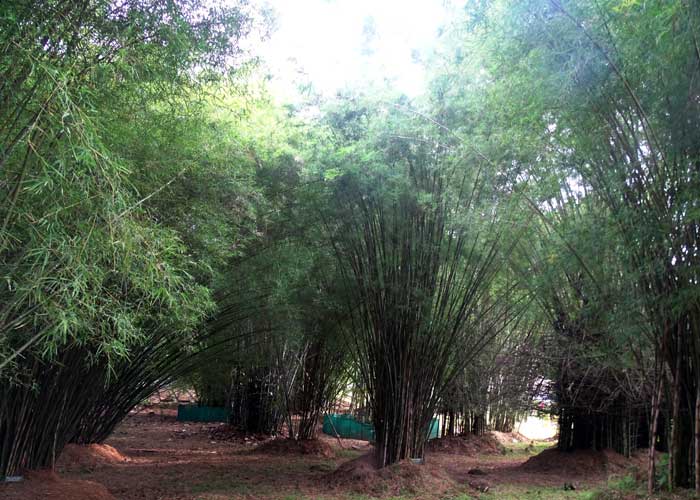India harbours the second-largest genetic resource of bamboo, with about 23 genera and 136 species. The precious germplasm of bamboo is getting lost due to the indiscriminate cutting of clumps. Therefore, the conservation of germplasm through an ex-situ approach is urgently required. One of the important components in the Operational Guidelines of the National Bamboo Mission is the identification of superior bamboo stock for large-scale multiplication. It is envisaged to improve the productivity and quality of bamboo for future plantations through the use of quality planting material. The KFRI Field Research Center at Velupadam has a collection of germplasms of various bamboo species.
The primary requirement for the selection of superior genotypes is to have accessions representing the genetic variability of the species from which selection is based on economically important traits and field trials undertaken to demonstrate the quality and adaptability to different agro-climatic zones. In this context, survey, identification, and collection of accessions representing different geographical areas of important bamboo species were done and assembled the accessions at FRC Velupadam.
The process of molecular characterization with markers is ongoing which will generate information about the genetic variability within and among populations at the species level and also genetic fingerprints that can be used to identify superior accession uses in mass multiplication programmes. The selected species include Teinostachyum wightii, Pseudoxytenanthera ritcheyi , Dendrocalamus stocksii, Oxytenanthera monadelpha, Oxytenanthera bourdillonii etc. In addition to this, a germplasm collection of different Ochlandra species representing 382 accessions are also available at FRC Velupadam.

Contact:
-
Dr. Sreekumar V B
Scientist in charge, Bamboo Germplasm
91 - 487 – 2690382
91-9446505286
germplasm@bambooinfo.in
